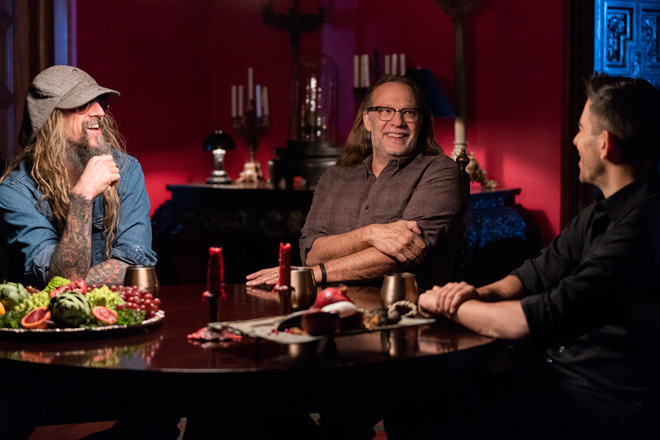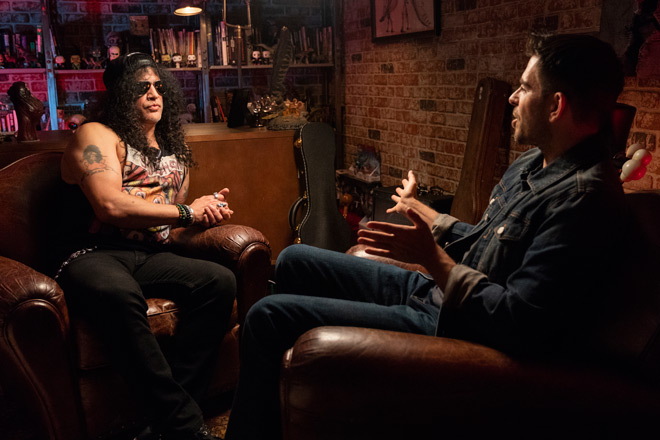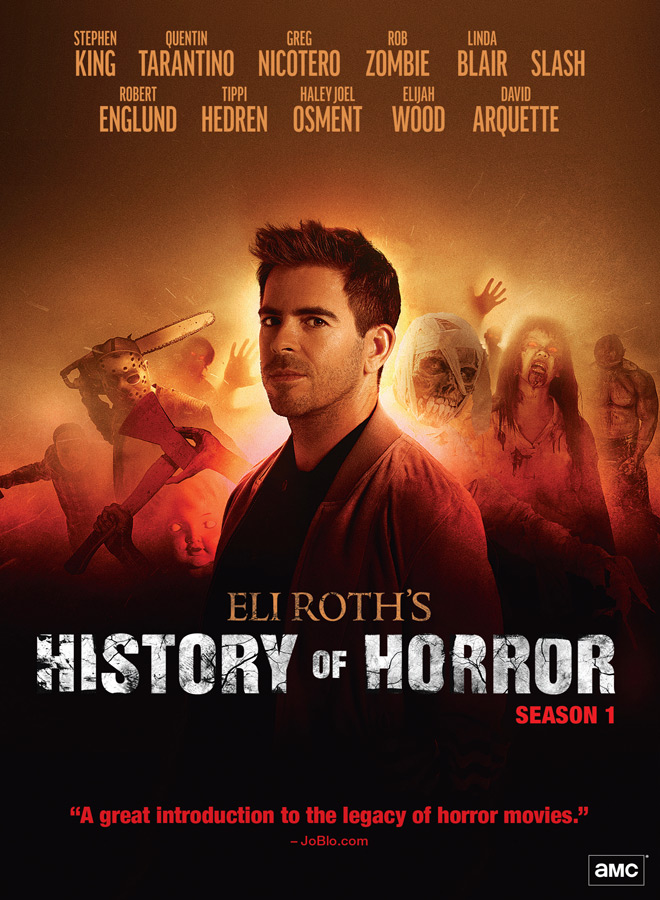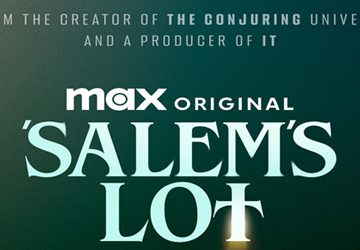Horror has always been a conversation starter. Since the early days of black and white films, filmmakers would tap into their dark sides to deliver terrifying stories to send shivers down the spines of audiences everywhere. For fans of the genre, getting to be a part of the conversation and absorbing every bit of information and lore associated with their favorite films is exciting, especially when you are at the table with the Horror legends themselves. Like many of you, award-winning filmmaker Eli Roth is a Horror nerd at heart and his docu-series Eli Roth’s History of Horror on AMC is the Horror roundtable discussion many of us have been dreaming of. Season two dropped on October 10th, but let us take a look back at season one’s chills and thrills as it hit DVD and Blu-ray thanks to RLJE Films on Tuesday, October 6th.

With History of Horror, Eli Roth takes you through different Horror subgenres across seven episodes, covering the genre-defining films and moments involving zombies, slashers, demons, killer creatures, vampires and ghosts. The series features commentary from historians, fans, and Horror legends from on and off-screen, including Stephen King, Jordan Peele, Robert Englund, Jamie Lee Curtis, Slash, Rob Zombie and more.
Within the darkened corners of Horror, filmmakers are able to bring light to cultural and societal issues that plague our daily lives. Horror has always had an element of socio-political commentary, a theme that was very prevalent in zombie films. The late, legendary filmmaker George A. Romero created the standard for zombie films with 1968’s Night of The Living Dead – a film known for being one of the first to feature a black hero. This trend would continue throughout his years, using films like 1978’s Dawn of The Dead and 1985’s Day of The Dead to draw parallels to race and class systems in society and the Reagan Era.
That decline in society is what fuels zombie films as they prey on our deepest fears – predators, sickness, and the question of what would you do to survive? Without Romero, there would be nothing like The Walking Dead, a show that ultimately popularized zombies and horror themes for the mainstream. In today’s climate, and dealing with a global pandemic, that fear of contagion and survival is clear in films like 2002’s 28 Days Later where the threat is due to the fear of a rampant virus creating hordes of erratic, fast-moving “zombies.”
It does not stop there, Horror and its significant cultural impact is evident in many aspects of the series, especially in the whopping two-part episode on the Slasher phenomena. The Slasher film touches on the most depraved and dark side that many can’t bear to think about – let alone see it played out in front of them. Going back to how Alfred Hitchcock’s 1960 classic Psycho terrified audiences in the ’60s to Horror greats like Michael, Jason, and Freddy slashing teens throughout a wild number of sequels, one of the biggest gripes was the notion that Slasher films were misogynistic and their gratuitous violence was too much for viewers.

History of Horror also shows you that if it were not for Slashers, we would not have the final girl trope – the one we can root for and relate to; the girl that kills the evil thing. It also mentions how one of the largest demographics amongst Slasher fans is women. That said, Get Out’s Jordan Peele discusses how 1992’s Candyman was a staple among the black community, alongside actor Tony Todd, who played the titular role, speaking about its use of slavery and violence and how people viewed the projects. Creators like Leigh Whannell, Quentin Tarantino, and others discuss “torture porn” and its ability to reflect the horrors of real life and the violence we see on a daily basis. Films like 2004’s Saw and 2005’s Hostel, in particular, were prime examples of the dark side of humanity.
Speaking of the dark side of humanity, let’s talk about demonic possession. From the moment The Exorcist premiered back in 1973, Horror was forever changed. Possession films work because they prey on the idea that there’s no escape from the evil that’s come into your life. Linda Blair, who portrayed Regan in The Exorcist, spoke about the grueling process of bringing that character to life. The transformation from innocent little girl into a violent, powerfully evil thing remains to be one of the most chilling displays of possession on film, and it’s a process that left permanent damage – Blair explains how one scene left her with a fractured lower spine.
Additionally, Writer Diablo Cody and Director Karyn Kusama talk about the impact of their 2009 film Jennifer’s Body and how people fear women and their power. The gritty, homemade feel of Evil Dead and Sam Raimi’s intricate camera work made a low-budget film become a cult classic, inspiring films to come. We take a look at how 1968’s Rosemary’s Baby deals with female vulnerability and paranoia, and how 1976’s The Omen gave us one of the creepiest kids in Horror history. Modern possession films such as Paranormal Activity and Get Out use out-of-the-box methods to use storytelling to build suspense. Jordan Peele goes in-depth on the use of Horror to discuss issues like racism and the microaggressions black people face on a daily basis; the act of suppression and not having a voice, as well as the horrors of racism. Tananarive Due, a Horror scholar, provides wonderful insight into Horror from the black perspective, and how these tropes are used to discuss the things most people don’t like to think about; displaying it in front of their faces, daring them to look away.
Which leads us to Creature features, one of the best representations of “the monsters within.” Monsters reflect the ugliness deep inside that humans try to repress, a beast that’s just scratching to get out. Joe Dante’s Gremlins was a prime example of what happens when our dark sides run amuck. It’s also no surprise that films like 1981’s An American Werewolf in London and The Howling come into play in this segment. Greg Nicotero, renowned effects artist, said that werewolf films were the age of effects work – the insane transformations from man into monster were a way for artists to push boundaries and do whatever they want with no rules. Films like John Carpenter’s 1982 edition of The Thing preyed on human paranoia and our deepest nightmares.
One of the biggest blockbusters in 2017 was the new adaptation of Stephen King’s It. King, alongside the film’s creators Andy and Barbra Muschietti, explained how the book and the film emphasize real-life horrors like racism, sexual assault, and homophobia, and that in life humans can be the real monsters. One of the most interesting pieces of information was learning that Curt Siodmak, writer of the 1941 film The Wolf Man, escaped Nazism and included parallels to that within the story, including the star on the wolf’s palm. While clowns, werewolves, and shape-shifting aliens can be frightening, there’s no better threat to humans than being knocked down the food chain. The Birds (1963), Cujo (1983), and Jaws (1975) are what happens when humans are no longer in control and are at the mercy of nature.
Then there are vampires, which, for decades, have been used to portray human sexuality and raise the question of what we are willing to do for love. Kristin Bauer van Straten, otherwise known as Pam on HBO’s True Blood – a series that arguably thrust vamps out of their coffins and into the mainstream – explained how the show often used vampires as a way to highlight issues and taboos in society that people don’t discuss. Rutina Wesley, Tara on True Blood, expanded by discussing humanity’s flawed relationship with sexuality and how being a vampire makes it easier to “accept.” This goes back to films like Ann Rice’s Interview With a Vampire (1994), the iconic story of Lestat and Louis and the homoerotic subtext that the film portrayed, right down to their makeshift family with Claudia, the young daughter-figure in their lives.

Quentin Tarantino explained how it goes back even further to films like 1936’s Dracula’s Daughter in the ’30s and Daughters of Darkness in 1971, both portraying lesbian vampire relationships. Alex Winter, from the legendary 1987 vamp-flick The Lost Boys, discussed how it could be seen as a metaphor for the AIDS crisis that bloomed in the ’80s and how the film’s implied that sex equals death. Of course, we can’t have a vampire segment without bringing up 2007’s Twilight and its blaring popularity, leading to shows like The Vampire Diaries that introduced vampires as romantic and glamorous. This notion of vampires using sex as a manipulation to lure their victims was completely obliterated when Steve Niles’ 2007 film 30 Days of Night premiered, where the vamps were violent creatures with no humanity whatsoever.
Lastly, season one of History of Horror concludes with ghost stories; recalling some of the most famous films featuring the things that go bump in the night. It ultimately starts with referencing one of the most well-known haunted house films, 1982’s Poltergeist. Actors Craig Nelson and Martin Casella recall the nightmarish filming process, including the famous pool scene that featured real skeletons. Insidious, a modernized retelling of a family being haunted, was another example of ghosts being malevolent spirits hellbent on terrorizing you. Stephen King admitted that one of the films that scared him the most was the 1963 film The Haunting, based on the novel The Haunting of Hill House by Shirley Jackson. King also explained his main gripes with Stanley Kubrick’s retelling of The Shining in 1981, basically saying that Kubrick’s film got rid of Jack Torrance’s character arc and favored art over horror.
Of course, ghost stories are not always about malevolent spirits out to get you – some are lost souls or victims looking for understanding. They discussed how many ghost stories are about resolving human relationships and the longing for understanding. Films like 1980’s The Changeling, 2001’s The Devil’s Backbone, and 1999’s The Sixth Sense were key examples of ghosts that were lost, longing for justice and understanding. Guillermo del Toro is brought up multiple times as a filmmaker that understands delivering a soulful and deeply tragic ghost story that represents the “blood stain of the past” – especially in his 2015 film Crimson Peak. Ghost stories speak to us about our fear of mortality and the fear of what happens after you’re dead.
Overall, Eli Roth’s History of Horror is a fantastic celebration of the Horror genre as well as the figures that fans know and love. While some information may not be new to Horror fans, it still brings fresh takes on the films we love, providing the chance to expand on the topics we know and pick up pieces we didn’t. The Blu-ray or DVD also includes many bonus features including segments on “Is Horror Sexist or Feminist?,” “How Abbott and Costello Meet Frankenstein Influences Tarantino,” “Making a Monster,” and more. Season two is now airing on AMC on Saturdays at 10pm EST, but you really need to check out the first season as well! That is why Cryptic Rock gives Eli Roth’s History Of Horror 5 out of 5 stars.






No comment